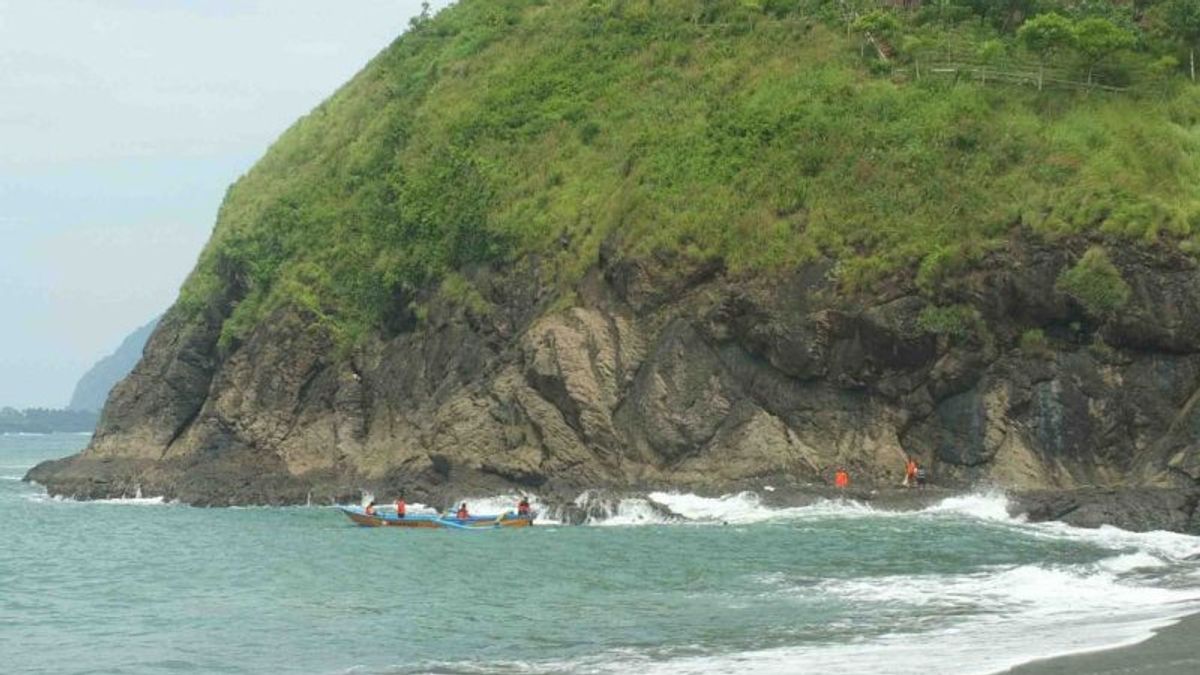JEMBER - Jember Resort Police Investigators are still investigating the incident on Sunday, February 13, which claimed 11 lives after being swept away by ocean currents at Payangan Beach, Jember Regency, East Java.
The police have questioned dozens of witnesses and the number is likely to increase. Those who have been questioned by the police are survivors, witnesses who know what happened during the Payangan Beach ritual, officers who rescued victims and members of the police in the field.
The unfortunate incident that happened to the Tunggal Jati Nusantara group of 24 people, including an Elf minibus driver with police number DK7526VF, two elderly people and one toddler who were in the parking area at the time of the incident, still raises various questions in the community. What exactly happened in the early hours of that morning.
Ambulu Police Chief AKP Ma'ruf said the group had actually been warned by local residents who are also the managers of Bukit Seroja tourism, which is located north of Payangan Beach, not to be by the sea due to bad weather.
"The Single Jati Nusantara group ignored the warning, so they continued to carry out the ritual on the beach. According to eyewitnesses, suddenly a big wave hit the ritual location, so that everyone was swept away by the waves of the southern sea," he said as reported by Antara, Tuesday, February 15.
The big waves hit when 20 people from the group, who were holding hands, carried out a ritual that had been going on for an hour on the shores of Payangan Beach.
From the information from the Jember Jatmika Basarnas Team Commander, it is known that 11 victims were found dead in the waters of Payangan Beach, either floating or on the beach. A number of victims who died were found not far from their location dragged by the currents of the south coast.

Wave and tide analysis
Main Expert Researcher in Applied Oceanography at the Research and Human Resources Agency, Center for Marine Research, Ministry of Maritime Affairs and Fisheries (KKP) Widodo S Pranowo tried to analyze wave and tidal conditions on Payangan Beach, during the fateful incident.
The condition of the sea level elevation of Payangan Beach shows the condition of the waters on Sunday morning, at 00.00 WIB, almost close to low tide, where the position of the low tide is expected to occur at 02.00 WIB. Theoretically, when seawater is receding, the current will move away from the coast towards the offshore.
If you look at the conditions at low tide, he said that the sea level elevation is suspected to be more advanced towards the sea, due to the water dropping or receding 0.4 to 0.6 meters from the coastline under normal conditions. So that when 20 people carried out the ritual procession between 00.00 WIB and 02.00 WIB, it was suspected that they were not aware that they were standing in a low tide area which is most likely under normal conditions where the waves break.
In daytime conditions, the area of the breaking waves can be easily recognized, namely from the presence of lots of white foam produced after the breaking waves hit the coastal slopes. But at night, with very limited lighting, the possibility of white foam can not be easily seen.
Analysis of wind and wave conditions
How can the ritual participants who stand in the area of the breaking waves, but in low tide conditions can be carried away by the current?
Widodo, who is also a member of the Advisory Board of the Korea-Indonesia Marine Technology Cooperation Research Center, explained the possibility based on global model data on wind distribution on Saturday, February 12, at 21.00 WIB to Sunday morning, at 00.00 WIB.
At that time the wind was blowing from the north or northeast to the south or northwest, so that during that time there were no significant sea waves that spread from the sea to the coast. The gusts of wind from the north or northeast actually add to the drag force on the sea surface which is in the process of receding, so the currents generated by the two forces are thought to increase the speed of the current leaving Payangan Beach.
However, he said, at 01.00 WIB, it was suspected that there was a change in the direction of the incoming wind. The wind came blowing from the west towards Payangan Beach.
The wind generates significant waves at sea or offshore up to about two meters, then spreads very quickly towards Payangan Beach, then the wave height is predicted to be around 1.8 meters when suddenly it hits the participants who are solemnly performing rituals in the coastal receding area. .
Some of the participants were then thought to have been dragged rapidly out to sea, away from the shore by the residual current of the wave force. However, Widodo did not mention it explicitly as a Rip Current because it usually occurs when sea conditions are calm, but the current can suck your feet.
Regarding the Payangan case, he has not dared to confirm whether it is in accordance with Rip Current's criteria.
The geographical location of Payangan Beach, according to him, is different from Parangtritis Beach in the Special Region of Yogyakarta or Karangbolong in Kebumen, Central Java, which faces directly to the Indian Ocean (facing south). While Payangan Beach in Jember, East Java, faces west.
So the fetch or the area of ocean wave generation by wind forces is slightly different. Fetch in Parangtritis is much wider and looser than fetch for Payangan, he continued.

He said the wind speed at the time of the incident was estimated at 8 to 9 kilometers (km) per hour. If calculated manually, it is not representative, because to produce wave heights between 1.5 meters to two meters, wind speeds of around 20 to 25 km per hour are required.
So, according to Widodo, there may be other factors, not only wind waves that propagate towards Payangan Beach, but there may also be a coupling of swell waves, so that the wave front becomes higher.
To verify this, he said it would take time and resources to invest in research.
"As we know, there are no tidal or wave measurement sensors installed on Payangan Beach. So maybe this disaster can be used as a lesson learned and a moment to conduct applied research in local locations and which are clearly needed by the community," Widodo said. .
Mitigation
The unfortunate events on the southern coast of Java Island have not happened once or twice. Mitigation steps must definitely be the government's priority in the midst of the lack of public literacy about natural conditions in the waters south of Java.
Actually, at Payangan Beach there are already coast guard officers, but of course they have working hours, namely tourist visiting hours, while other visitors, such as groups from the Tunggal Jati Nusantara Group, with a specific purpose who come in the middle of the night, certainly don't. monitored.
Widodo suggested that local governments or tourism managers complete facilities on the coast, in the form of television screens or electronic boards that display predictions or forecasts of sea level elevation due to tides (for the next seven days) and predictions of maritime weather conditions (three to seven days ahead).
This information can also be accompanied by restrictions for certain hours that may potentially harm tourists or visitors who come within 24 hours at the location. For this reason, local governments or tourism managers can collaborate with the BMKG Maritime Meteorology Center and the Climate and Atmospheric Research Center of the National Research and Innovation Agency (BRIN).
Or, at night, vulnerable coastal locations on the southern coast of Java are attached with chains or barriers as a safe boundary line. During the day, the chain or barrier can certainly be removed when the water conditions are safe to visit.
Those who are proven to be determined to cross the line and eventually lead to disaster, especially the loss of life, must of course receive strict sanctions.
The English, Chinese, Japanese, Arabic, and French versions are automatically generated by the AI. So there may still be inaccuracies in translating, please always see Indonesian as our main language. (system supported by DigitalSiber.id)








